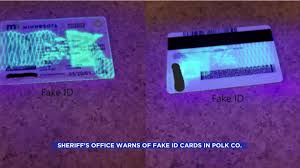digital ID market
Outline:
- Introduction
- Overview of digital identity (ID) and its significance.
- Why digital IDs are increasingly essential in today’s connected world.
- Brief mention of key drivers behind the growth of the digital ID market.
- What is a Digital ID?
- Definition and explanation of digital ID.
- Key components: identity attributes, authentication mechanisms, and verification processes.
- Different forms of digital IDs (biometrics, mobile IDs, government-issued e-IDs, etc.).
- The Evolution of Digital Identity Solutions
- History and development of digital ID technologies.
- From paper-based identification to digital transformation.
- Role of technology in shaping modern identity verification.
- Key Features of Digital ID Solutions
- Biometric Authentication: Facial recognition, fingerprint scanning, voice recognition, etc.
- Multi-Factor Authentication (MFA): Combining multiple verification factors for enhanced security.
- Blockchain Integration: How blockchain technology is used in secure digital identities.
- Interoperability: Importance of digital IDs working across multiple systems and platforms.
- User Control and Privacy: Balancing security with user rights and privacy.
- Market Analysis: The Growing Digital ID Market
- Current Market Size and Growth Trends
- Overview of the global digital ID market size and projected growth.
- Leading countries and regions driving market growth.
- Key Market Drivers
- Rising cybersecurity threats and data breaches.
- Increasing regulatory requirements for identity verification.
- Growing demand for online services and digital transformation.
- Challenges Facing the Digital ID Market
- Privacy concerns and data protection issues.
- Technological limitations and integration challenges.
- Regulatory and compliance hurdles.
- Regional Analysis
- North America, Europe, Asia-Pacific, and other regions.
- Comparison of adoption rates, market maturity, and growth potential.
- Competitive Landscape
- Leading Companies and Their Offerings
- Overview of top players in the digital ID market (e.g., Thales, IDEMIA, Jumio, Microsoft).
- Innovative Startups Disrupting the Market
- Discussion on emerging companies bringing novel solutions.
- Partnerships and Collaborations
- How alliances are driving growth and innovation in digital ID.
- Target Audience for Digital ID Solutions
- Businesses and Corporations
- How digital ID solutions benefit companies across sectors (e.g., finance, healthcare, retail).
- Government and Public Sector
- Use of digital IDs for e-government services and public safety.
- Consumers and End-Users
- How digital IDs improve user experience and personal security.
- Non-Governmental Organizations (NGOs) and Non-Profits
- Using digital IDs to facilitate aid distribution and social services.
- Applications and Use Cases of Digital IDs
- Financial Services and Banking
- KYC (Know Your Customer) compliance, online banking, and fraud prevention.
- Healthcare
- Patient identification, secure access to medical records, and telemedicine.
- E-Commerce and Retail
- Customer authentication, secure payments, and personalized experiences.
- Travel and Immigration
- Digital passports, border control, and visa applications.
- Education
- Online student verification and secure access to digital learning resources.
- The Future of the Digital ID Market
- Technological Trends Shaping the Future
- AI and machine learning in identity verification.
- The role of decentralized identity solutions.
- Regulatory Trends
- Anticipated changes in data privacy laws and their impact on digital ID.
- Predictions for the Next Decade
- Growth projections and potential disruptions in the market.
- Potential Challenges and Solutions
- Navigating privacy concerns, technological adoption barriers, and regulatory complexities.
- Conclusion
- Summary of the digital ID market's current state and future outlook.
- Final thoughts on the importance of digital identity in securing a connected world.
- Recommendations for businesses considering digital ID solutions.
Draft Expansion:
Introduction The concept of identity has always been central to human society, with various forms of identification used throughout history. In today’s digital age, traditional forms of ID like driver’s licenses, passports, and social security numbers are increasingly giving way to digital identities. Digital IDs offer a secure and convenient way to verify a person's identity online or offline, enabling access to services that require authentication, such as banking, healthcare, and government services. The global push toward digital transformation has accelerated the need for robust digital identity solutions, making the digital ID market a rapidly growing industry.
The digital ID market encompasses a wide range of technologies and services designed to establish and verify digital identities. It includes everything from biometrics and mobile IDs to blockchain-based identity solutions. As businesses, governments, and individuals increasingly adopt digital ID solutions, the market continues to grow at a remarkable pace, driven by the need for secure, efficient, and user-friendly identity verification processes.
What is a Digital ID? A digital ID is a collection of electronic data that uniquely represents an individual, organization, or device in the digital world. It typically includes a set of attributes, such as the individual’s name, date of birth, biometric data, or other identifying information, which can be used to authenticate the person’s identity. Digital IDs enable access to online services, facilitate transactions, and allow users to prove who they are in a seamless and secure manner.
Digital IDs can take many forms:
- Biometric IDs: Utilize physical characteristics like fingerprints, facial recognition, or iris scans for authentication.
- Mobile IDs: Digital representations of traditional ID documents, accessible via smartphones.
- Government-issued e-IDs: Official electronic identification cards used for accessing government services.
- Self-sovereign identities (SSI): Allow individuals to control their own identity data without relying on centralized authorities.
The Evolution of Digital Identity Solutions The concept of digital identity is not new; it has been evolving for decades. Early forms of digital identification emerged in the 1980s with the development of digital certificates and public-key infrastructure (PKI) for secure communications. However, the rapid growth of the internet and e-commerce in the late 1990s and 2000s created a need for more sophisticated digital ID solutions.
Over the years, advancements in technology, including biometrics, artificial intelligence (AI), and blockchain, have significantly enhanced digital identity verification capabilities. These innovations have led to the development of more secure, scalable, and user-friendly solutions that can meet the diverse needs of modern businesses, governments, and consumers.
Key Features of Digital ID Solutions Modern digital ID solutions come with a range of features designed to improve security, user experience, and compliance:
- Biometric Authentication: Utilizing unique physical characteristics, such as fingerprints or facial recognition, biometric authentication adds an extra layer of security, making it difficult for unauthorized users to impersonate someone else.
- Multi-Factor Authentication (MFA): Combines two or more verification factors, such as a password and a biometric scan, to increase security.
- Blockchain Integration: Blockchain technology can be used to create tamper-proof, decentralized identity records that are more secure and transparent.
- Interoperability: Digital IDs must work seamlessly across different systems, applications, and countries, especially for global businesses.
- User Control and Privacy: Individuals should have control over their digital identity data, including the ability to share specific attributes selectively and ensure their information remains private.
Market Analysis: The Growing Digital ID Market The digital ID market is experiencing significant growth, driven by the demand for secure and convenient identity verification solutions. According to industry reports, the market is expected to reach billions of dollars in revenue within the next decade, with a compound annual growth rate (CAGR) exceeding 20%. The rise in cybersecurity threats, regulatory requirements, and the expansion of digital services are all contributing factors to this growth.
Key market trends include:
- Increased Adoption of Biometric Solutions: Biometrics are becoming more prevalent in digital ID due to their convenience and security benefits.
- Growth in Mobile ID Use: Mobile IDs are gaining traction as more people use smartphones for daily activities, including financial transactions and accessing healthcare services.
- Blockchain and Decentralized Identity: Blockchain’s potential to provide a secure, decentralized method of identity verification is gaining attention from both startups and established companies.
 ID market trends
ID market trends
 identity privacy
identity privacy
 advanced ID technology
advanced ID technology
 Why Driver's Licenses Are the
Why Driver's Licenses Are the